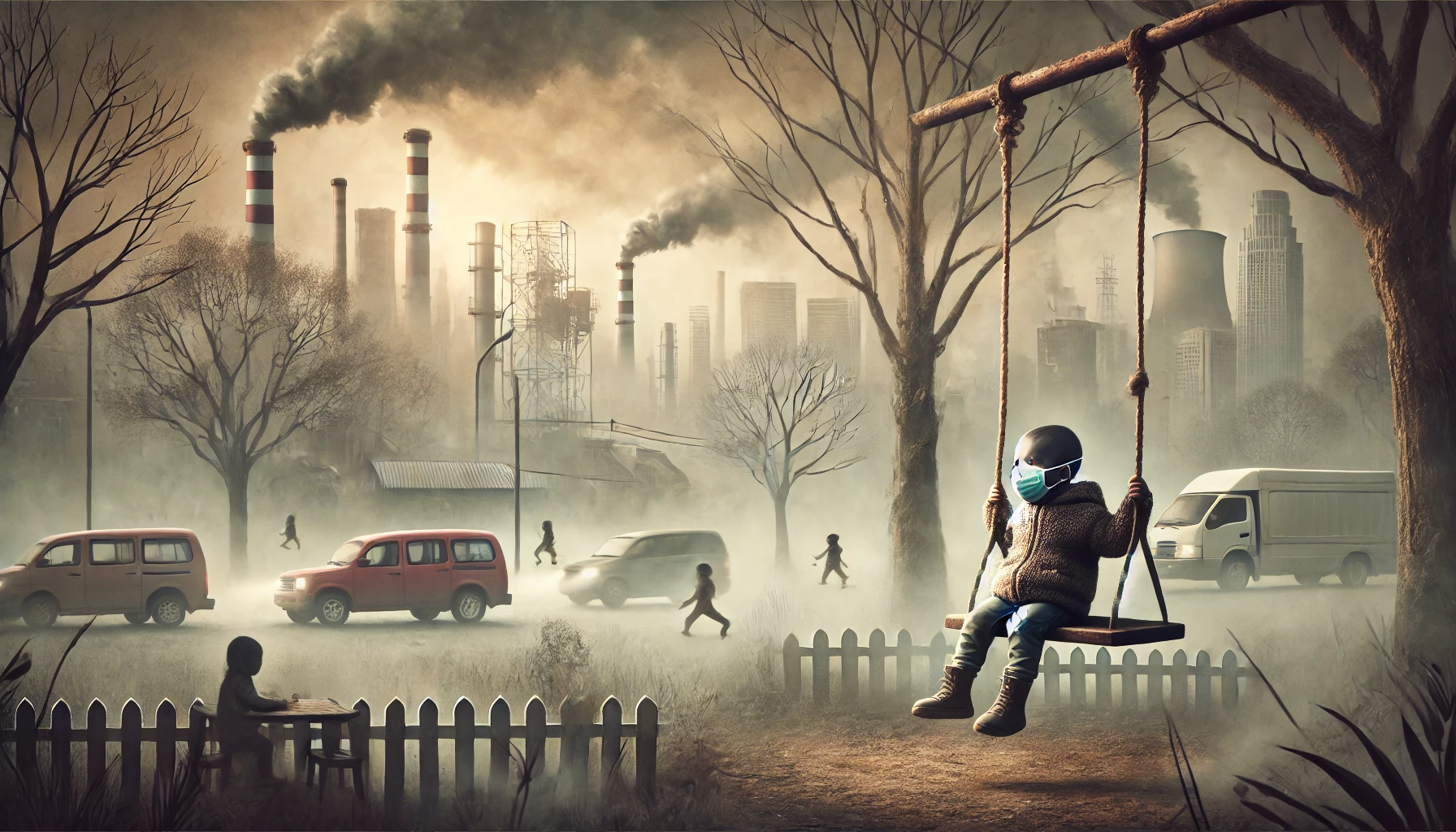
Choking Childhood: How Pollution is Affecting Our Kids’ Health
Delhi NCR has become synonymous with alarming levels of pollution, particularly during winter, when the air becomes visibly thick with smog. While the effects of pollution are detrimental to all, children bear the brunt of this crisis due to their developing immune systems and higher vulnerability. This article delves into how pollution is impacting children’s health, the underlying causes, and ways parents and society can mitigate its effects.
The State of Pollution in Delhi NCR
Delhi NCR consistently ranks as one of the most polluted regions globally. The Air Quality Index (AQI) during the winter months often crosses 400–500, indicating “severe” levels of pollution. Children in the region are exposed to pollutants like:
• Particulate Matter (PM2.5 and PM10): Tiny particles that penetrate the lungs and bloodstream.
• Nitrogen Dioxide (NO2): Emitted from vehicular exhaust and industrial processes.
• Sulfur Dioxide (SO2): From burning fossil fuels.
• Ground-Level Ozone: Formed by chemical reactions between pollutants under sunlight.
This toxic mix poses significant risks to children’s physical and cognitive development.
How Pollution Affects Children’s Health
1. Respiratory Problems
• Asthma and Bronchitis: The fine particulate matter (PM2.5) damages the respiratory tract, leading to inflammation, wheezing, and chronic conditions like asthma.
• Reduced Lung Development: Prolonged exposure to pollution can stunt lung growth in children, reducing lung capacity and function.
2. Weakened Immune Systems
Children exposed to polluted air are more susceptible to infections like pneumonia and bronchitis. A compromised immune system means they fall sick more frequently.
3. Impact on Brain Development
• Studies suggest that long-term exposure to air pollution can impair cognitive abilities and lead to developmental delays in children.
• Pollutants like PM2.5 can cross the blood-brain barrier, causing inflammation and potential neurological disorders.
4. Cardiovascular Issues
Air pollution is linked to increased blood pressure and risk of heart diseases, even in young children.
5. Psychological Effects
Living in a high-pollution environment can cause anxiety and stress in children, particularly if they are restricted from playing outdoors.
6. Allergies and Skin Conditions
Pollutants aggravate allergies and skin conditions like eczema, causing discomfort and requiring long-term management.
Sources of Pollution in Delhi NCR
1. Vehicular Emissions: A significant contributor, with Delhi NCR having one of the highest vehicle densities in India.
2. Industrial Pollution: Factories and thermal power plants release harmful gases and particulate matter.
3. Construction Dust: Continuous construction projects release dust particles into the air.
4. Crop Burning: Stubble burning in neighboring states like Punjab and Haryana adds to the seasonal smog.
5. Firecrackers: Festive celebrations, particularly around Diwali, further worsen air quality.
Why Children Are More Vulnerable
• Higher Breathing Rate: Children breathe more air per kilogram of body weight than adults, increasing their exposure to pollutants.
• Developing Organs: Their lungs, brain, and immune systems are still developing, making them more susceptible to damage.
• Outdoor Activity: Kids spend more time outdoors, where pollution levels are often higher.
What Can Parents Do to Protect Their Children?
1. Use Air Purifiers Indoors
Invest in HEPA filter air purifiers to reduce indoor air pollution.
2. Monitor AQI Levels
Check AQI levels daily and limit outdoor activities when pollution is severe.
3. Provide Protective Gear
• Use N95 masks for children when they step out.
• Equip schools with air purifiers and masks for children during high-pollution days.
4. Maintain a Healthy Diet
• Include foods rich in antioxidants like fruits, vegetables, and nuts to boost immunity.
• Ensure adequate hydration to flush out toxins.
5. Limit Outdoor Exposure
Avoid outdoor play during early mornings and late evenings when pollution levels are at their peak.
6. Create a Green Space at Home
Add indoor plants like aloe vera, snake plant, and areca palm to improve air quality.
7. Engage Schools
Encourage schools to adopt measures like:
• Installing air purifiers.
• Organizing indoor sports activities during high-pollution days.
Role of Government and Society
1. Policy Interventions
• Strengthen implementation of the Graded Response Action Plan (GRAP).
• Enforce stricter penalties for stubble burning and industrial violations.
2. Promoting Clean Energy
Encourage adoption of renewable energy sources and electric vehicles.
3. Awareness Campaigns
Educate parents, schools, and communities on mitigating pollution’s effects on children.
4. Creating Green Spaces
Develop parks, plant trees, and increase vegetation to act as natural air filters.
5. School Involvement
• Schools can declare pollution holidays when AQI levels reach hazardous levels.
• Organize health workshops for parents and children.
Conclusion
The pollution crisis in Delhi NCR is more than an environmental concern—it’s a direct threat to the health and future of our children. While immediate steps can be taken by parents to shield their kids, long-term solutions require collaborative efforts from individuals, institutions, and the government.
Addressing pollution isn’t just about reducing smog; it’s about ensuring a healthier, brighter future for the next generation. Let’s act now to stop the choking of childhood and give our kids the clean air they deserve.


